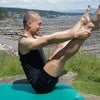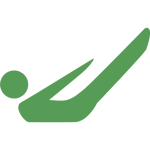Vertebro Manubrium Region
Madeline Black
Tutorial 3020
Watch this Tutorial


Debra H
1 person
likes this.
I really enjoyed this short tutorial x so interesting to see that a lax Trapezius and hypermobility could be corrected so quickly and easily.
7 years ago
Thank you for this very instructive tutorial ....
6 years ago
Looking at just a couple of the rings of the thorax is awesome! Often under-looked at or overlooked altogether. (and Linda Joy-Lee's courses aren't available to non-PTs.)
Valuable tutorial in content structure,length, pace and delivery!
It doesn't go too deep, nor does Madeline veer off out of excitement, reflect out loud about what she's seen in her own clients/students, nor go on too long. and the model was lovingly quiet and contained, while still expressing her enthusiasm (clearly a teacher). I think contributing teachers could use this as a model for crafting and scripting well-edited tutorials.
Thanks, Madeline, for offering a softly focused lesson (without a lot of clutter!) that I can use for future reference. It's so well explained I'll consider sharing it directly with clients, even if it's just to further illustrate the level of nuance and complexity of the human form.
Valuable tutorial in content structure,length, pace and delivery!
It doesn't go too deep, nor does Madeline veer off out of excitement, reflect out loud about what she's seen in her own clients/students, nor go on too long. and the model was lovingly quiet and contained, while still expressing her enthusiasm (clearly a teacher). I think contributing teachers could use this as a model for crafting and scripting well-edited tutorials.
Thanks, Madeline, for offering a softly focused lesson (without a lot of clutter!) that I can use for future reference. It's so well explained I'll consider sharing it directly with clients, even if it's just to further illustrate the level of nuance and complexity of the human form.
6 years ago
Thank you. what a wonderful tutorial. I actually wish you'd gone longer, though the clarity of what you treated is awesome. Maybe a full-hour video about lifting the manubrium in relation to correcting forward head posture? Or maybe that's a dissertation. I loved the see-saw image, was surprised you did not mention the pectoralis minor nor the way that rotating the humerus externally opens the clavicular joint at the manubrium, but maybe those are secondary or tertiary considerations. Please, do more videos on this important junction. And thank you.
4 years ago
Thank you fro your comment Paul. I would love expand the tutorial into a longer workshop. I focus on bone movement, the fascia and muscles involved participate in the motion. I tend not focus on one muscle since that is not how movement occurs. Also, it was a short tutorial as you said. I will ask PA about more videos! You could too by the way! Best wishes, Madeline
4 years ago
11-20 of 20
You need to be a subscriber to post a comment.
Please Log In or Create an Account to start your free trial.

















